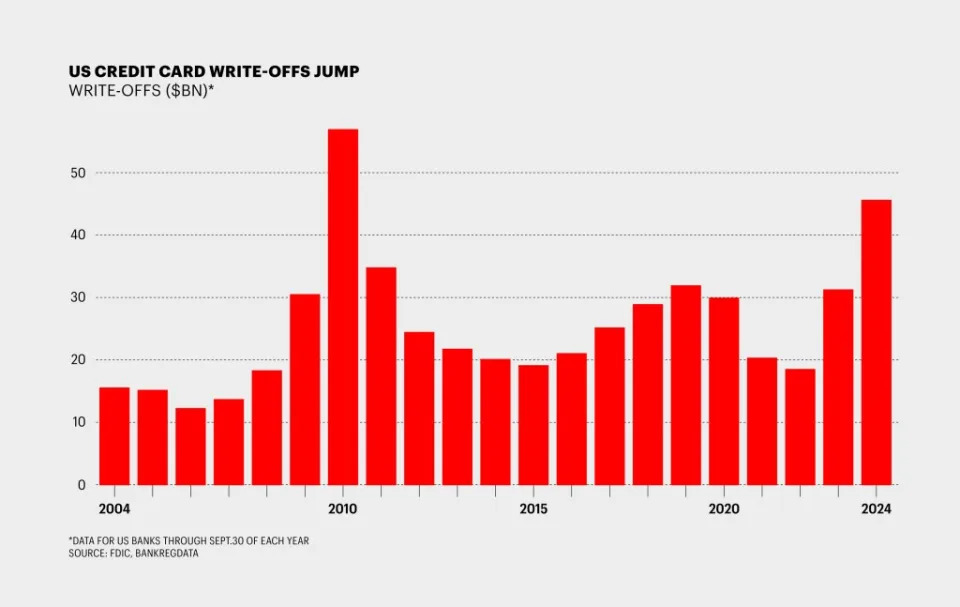Americans are increasingly falling behind on their credit card bills, flashing a warning sign for the economy
Americans are having more trouble paying credit card bills, forcing lenders to take steeper losses as they give up on collecting those debts.
Banks are writing off credit card debt at the highest level since 2010, when consumers were still emerging from the aftermath of the financial crisis and Great Recession.
According to quarterly FDIC stats compiled by BankRegData , the total amount charged off through the first three quarters of 2024 reached $45.7 billion, up 46% from the same period a year ago.
This year’s surge, which was first reported by the Financial Times , represents a potential red flag for the economy as consumers have juggled inflation and higher borrowing costs in recent years.
Numbers for the fourth quarter aren’t available yet but likely will show a further increase as write-offs typically tick higher at the end of the year amid the holiday-shopping frenzy.

Separate data from the New York Federal Reserve shows credit card balances grew by $24 billion during the third quarter and now total $1.17 trillion, up 8.1% from a year ago.
While the delinquency rate on card balances improved to 8.8% from 9.1% in the second quarter, the rate across all consumer debt ticked up to 3.5%, from 3.2%.
“Although household balances continue to rise in nominal terms, growth in income has outpaced debt,” Donghoon Lee, economic research advisor at the New York Fed, said in a statement last month . “Still, elevated delinquency rates reveal stress for many households, even amid some moderation in delinquency trends this quarter.”
Individual card issuers like Capital One have also recently flagged increases in their write-off rates.
Such strains indicate the massive buying spree that consumers embarked on during the pandemic and afterward is starting to catch up to them now. That’s despite otherwise positive economic readings on GDP growth, payroll gains, and personal income.
Inflation has cooled sharply from a high of 9% in 2022 to 2.7% in November, but prices are still elevated from pre-pandemic levels.
Meanwhile, the Federal Reserve’s aggressive hiking of benchmark interest rates, which influence credit card rates, is still being felt even as policymakers have started to bring them down this year.
In the 12 months that ended in September, consumers who didn’t fully pay off their monthly credit card bills paid $170 billion in interest, according to the FT.
Consumers may not see much relief soon. President-elect Donald Trump’s plans to impose tariffs and crack down on immigration are expected to result in higher prices for consumers.
And if those policies keep inflation sticky, the Fed will have less leeway to further lower rates, keeping the burden heavy on credit card users.

